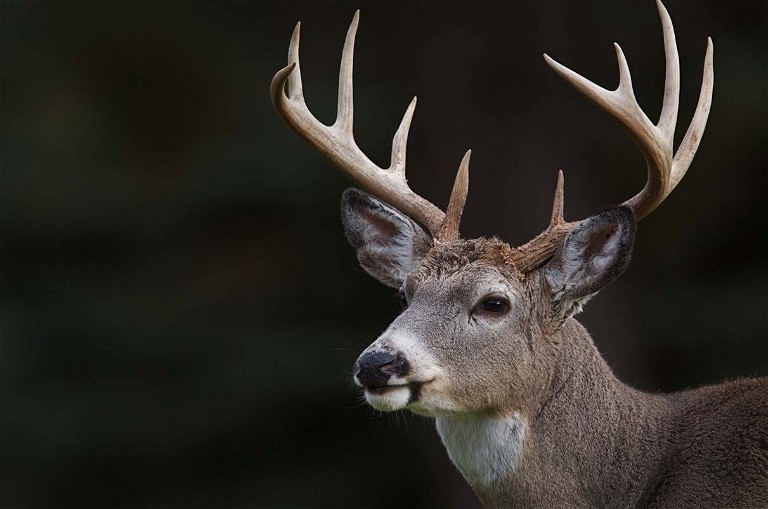STEWART ISLAND Rakiura
EXPORT SPOT X
Words by NZ Fishing News
Proudly brought to you by

For this instalment of our Export Spot X series, we venture south to one of New Zealand’s gems, where the fishing diving and hunting o ortunities are endless and the beers are easy to keep cold.
The location and history
Tucked away at the southern tip of New Zealand, where the ‘Roaring Forties’ winds whip across the coast and native forests cloak the land, lies Stewart Island.
Long before European explorers set foot on its shores, Stewart Island was inhabited by Māori, who named it Te Punga o Te Wakaa-Māui (The Anchor Stone of Māui’s Canoe). Legend holds that the island is the anchor stone of Māui’s great canoe, Te Waka-a-Māui, which is said to have brought the North Island (Te Ika-a-Māui) to the surface. However, Rakiura is the commonly known Māori name. It is usually translated as ‘Glowing Skies’, a reference to the aurora australis, the southern lights that are a phenomenon of southern latitudes.
Evidence of Māori settlement on Stewart Island dates back over 700 years, with archaeological sites scattered throughout the island, including middens, pā, and waka (canoe) remnants. European exploration of Stewart Island began in the late 18th century, with Captain James Cook navigating its treacherous waters during his voyages around
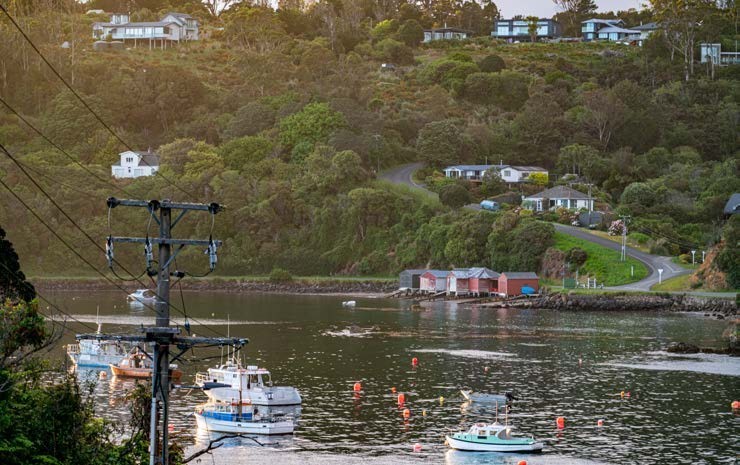

Images by NZ Fishing News & Etoile Smulders
New Zealand. However, it wasn’t until the early 19th century that European sealers and whalers began to establish a presence on the island.
In 1809, the First Officer on the vessel Pegasus, William W. Stewart, charted its coastline (and earned himself the honour of its Pākehā name in the process). The island later became a base for sealers and whalers, drawn by the abundant marine life in the surrounding waters. Despite the harsh conditions and isolation, a small European community began to take root on the island.
In more recent times, Stewart Island’s rugged wilderness and unique biodiversity began to attract attention for conservation efforts. Stewart Island is home to Rakiura National Park, New Zealand’s southernmost national park. The island has also been designated as a Dark Sky Sanctuary, in recognition of its pristine night skies free from light pollution.
Trip planning
For Stewart Island’s small population of around 450 residents, primarily concentrated in the township of Oban, tourism plays a vital role. Accordingly, the necessary infrastructure and services are available to suit a wide range of visitor needs. Transport options to Stewart Island are either by sea or air. Ferries depart from Bluff and aircraft depart from Invercargill Airport. The ferry crossing takes approximately one hour; flights take approximately 15-20 minutes.
At latitude 47 degrees south, the weather is often unpredictable, but the climate is surprisingly temperate with balmy summer temperatures. The long summer days see the sun rising at 5am and setting at 10pm, allowing plenty of time to explore.
However, because showers and cold snaps can occur at any time, clothing and footwear for all seasons are recommended. A range of accommodation options are on offer – backpackers, motels, cribs to hire, and lodges.
The fishing
A bunch of charter boats service the area with a range of options from half-day traditional handlining trips to five-day circumnavigations of the island. Several charter operators targeting mainly tasty blue cod offer either half-day or full-day charters and supply all rods, reels, handlines, and equipment. Skippers are mainly ex-commercial operators, so they know where to find the fish, and the catch is shared between those fishing.
For the more adventurous, the western side of the island offers a wealth of structure and deep water to fish. All manner of southern species are possible here – ‘puka, bluenose, bluefin tuna, blue moki, trumpeter, tarakihi, and of course the ubiquitous blue cod. The eastern side of the island, although receiving more fishing effort, provides more shelter and boasts very healthy fish populations, too.
If you prefer to do it yourself, fishing from the shore around the island can also yield tasty blue cod and other desirable species. Or you could always make friends with the locals and borrow a kayak or boat!
The diving
Rakiura is famous for its incredible underwater life. The Ulva Island-Te Wharawhara Marine Reserve is located in the outer portion of Paterson Inlet. Established in 2004 and covering 1,075 hectares, the Department of Conservation states up to 170 species of seaweed and over 50 species of fish can be seen here.
“ A BUNCH OF CHARTER BOATS SERVICE THE AREA WITH A RANGE OF OPTIONS FROM HALF-DAY TRADITIONAL HANDLINING TRIPS TO FIVE-DAY CIRCUMNAVIGATIONS OF THE ISLAND. ”
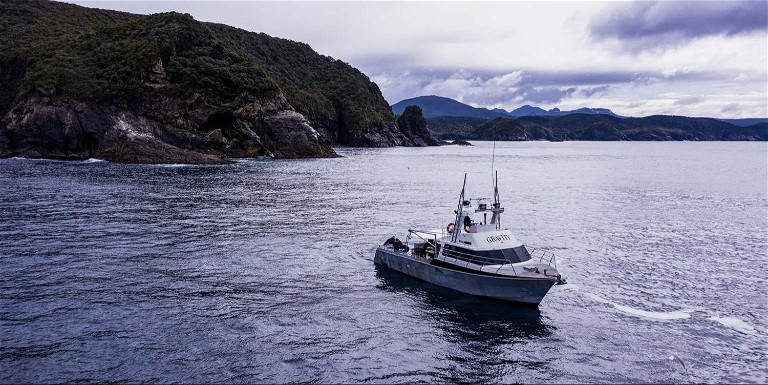
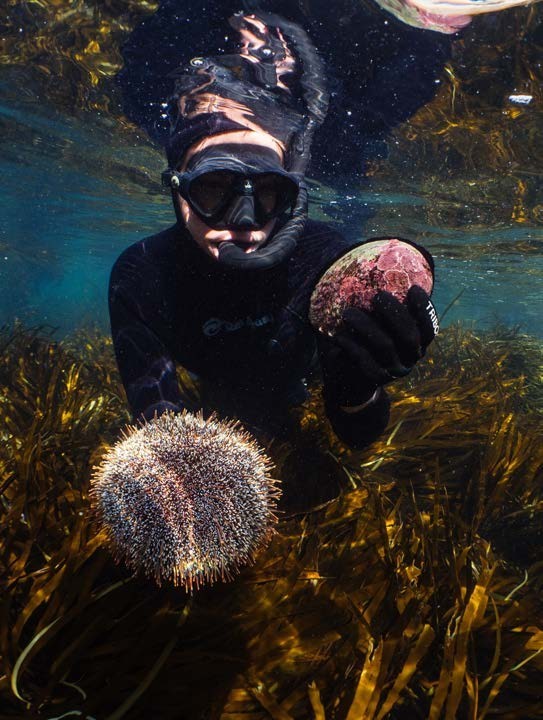
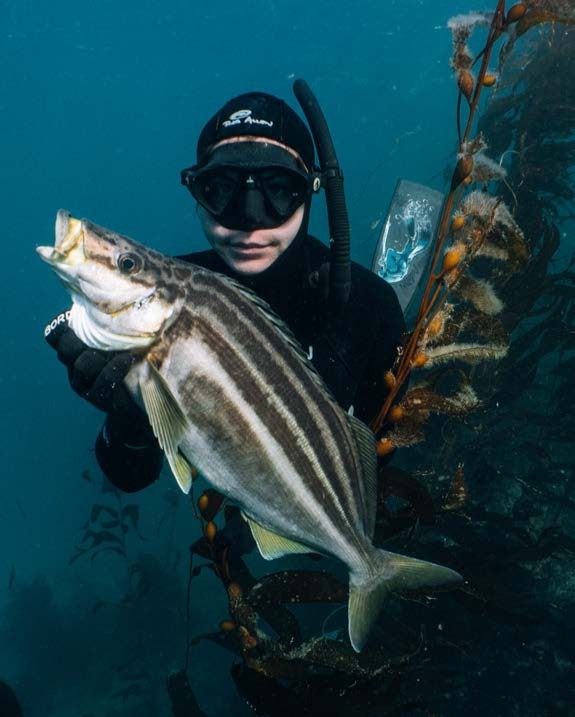
“ FOR HUNTER-GATHERERS, THERE ARE BIG PĀUA, CRAYFISH, AND SCALLOPS TO INDULGE IN, AND FOR SPEAROS THE OPPORTUNITY TO TARGET A RANGE OF FISH SPECIES IN SHALLOW WATER. ”
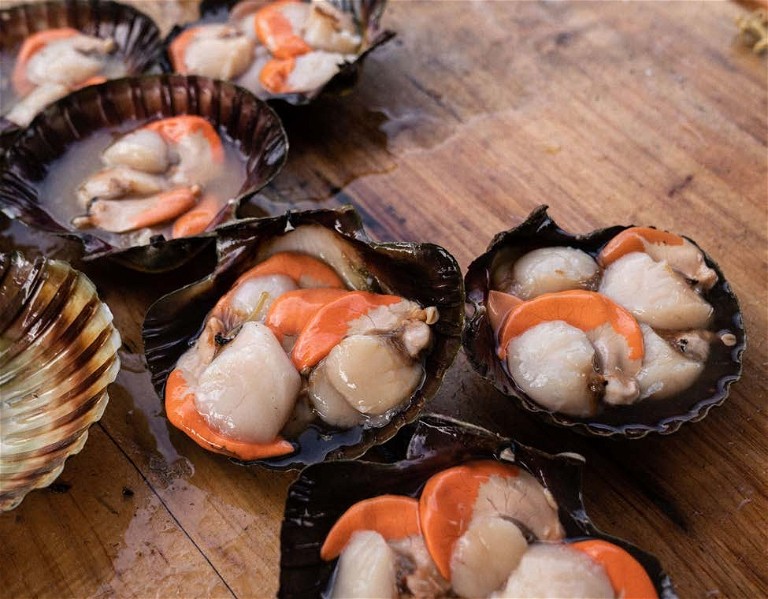

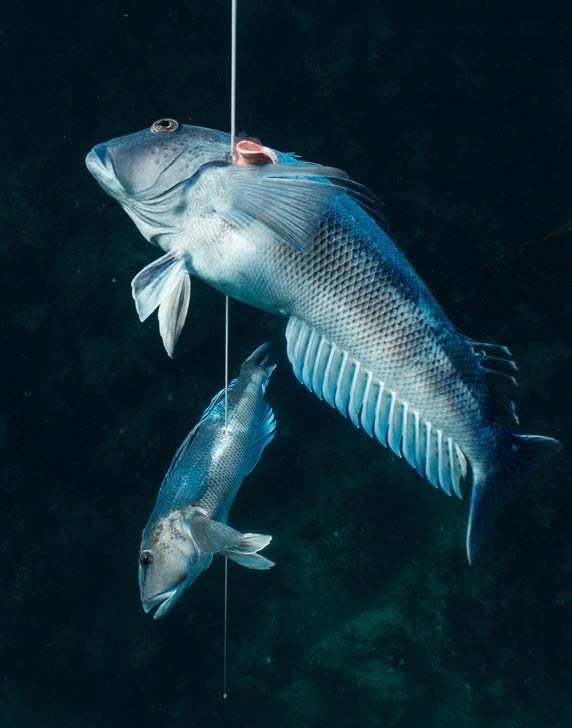
“ ALL MANNER OF SOUTHERN SPECIES ARE POSSIBLE HERE – ‘PUKA, BLUENOSE, BLUEFIN TUNA, BLUE MOKI, TRUMPETER, TARAKIHI, AND OF COURSE THE UBIQUITOUS BLUE COD. ”
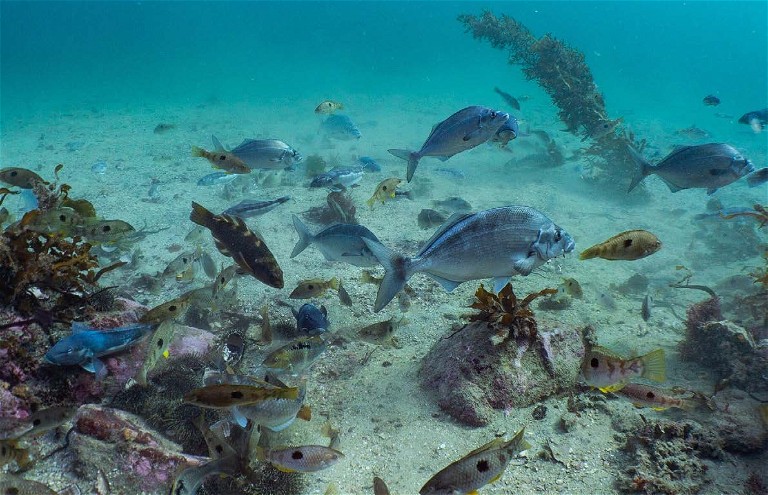
For hunter-gatherers, there are big pāua, crayfish, and scallops to indulge in, and for spearos the opportunity to target a range of fish species in shallow water. While there are many safe diving locations around the island, there are also spots where you might question your place at the top of the food chain. It is estimated there are 220 individual great white sharks that visit the area of the Northern Titi Islands. Shark cage diving trips run from Bluff on the mainland, and if getting faceto-face isn’t your cup of tea, the whites can often be viewed clearly from the safety of the vessels.
Other pursuits
Encompassing nearly 85% of the island, Rakiura National Park covers dense rainforests and windswept coastlines to tranquil fiords and uninhabited golden beaches. Visitors can explore a network of hiking trails and huts, encounter native wildlife, and immerse themselves in the unspoiled beauty of this remote wilderness.
Stewart Island offers the only readily accessible herd of whitetail deer in the Southern Hemisphere and is therefore a popular destination for hunters. Whitetails’ cagey nature, combined with the island’s dense forest cover, presents an exciting challenge. However, they have one weakness – a liking for seaweeds including bull kelp, meaning they are regularly spotted on the remote beaches at dawn or dusk.
“ IT IS ESTIMATED THERE ARE 220 INDIVIDUAL GREAT WHITE SHARKS THAT VISIT THE AREA OF THE NORTHERN TITI ISLANDS. ”
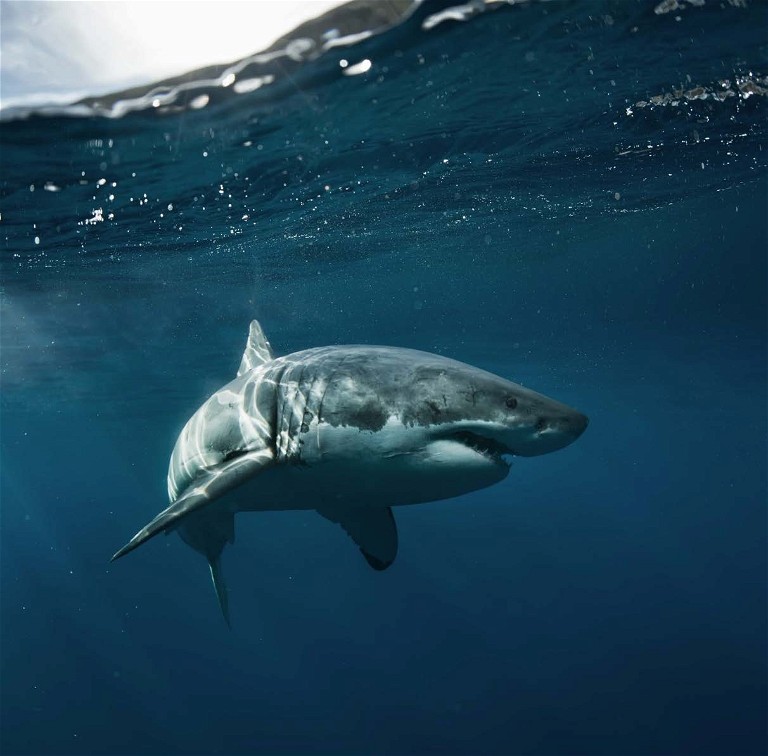
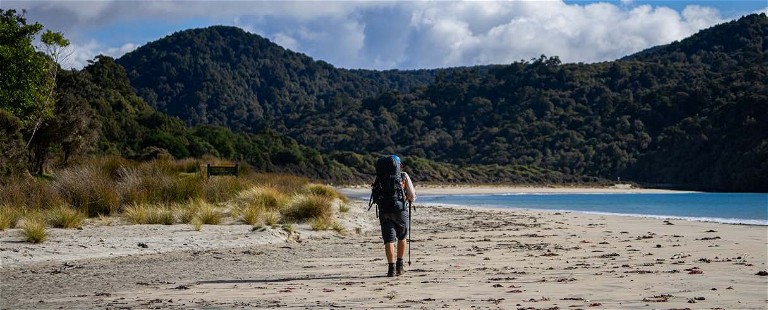
Rakiura National Park Visitor Centre administers 35 hunting blocks and an open zone on Stewart Island. A further 13 blocks on the island are administered by Rakiura Māori Land Trust. Many of the blocks have specific hunter camps and huts, while others share backcountry huts and facilities with trampers. Permits are required for all hunting and these need to be applied for in advance. Helicopter flyins and water taxis can be arranged to make life easier.
So, there you have it – a crash course on the amazing Stewart Island/Rakiura. Worth booking a trip, eh?
“ VISITORS CAN EXPLORE A NETWORK OF HIKING TRAILS AND HUTS, ENCOUNTER NATIVE WILDLIFE, AND IMMERSE THEMSELVES IN THE UNSPOILED BEAUTY OF THIS REMOTE WILDERNESS. ”
“ STEWART ISLAND OFFERS HUNTERS THE ONLY READILY ACCESSIBLE HERD OF WHITETAIL DEER IN THE SOUTHERN HEMISPHERE. ”
